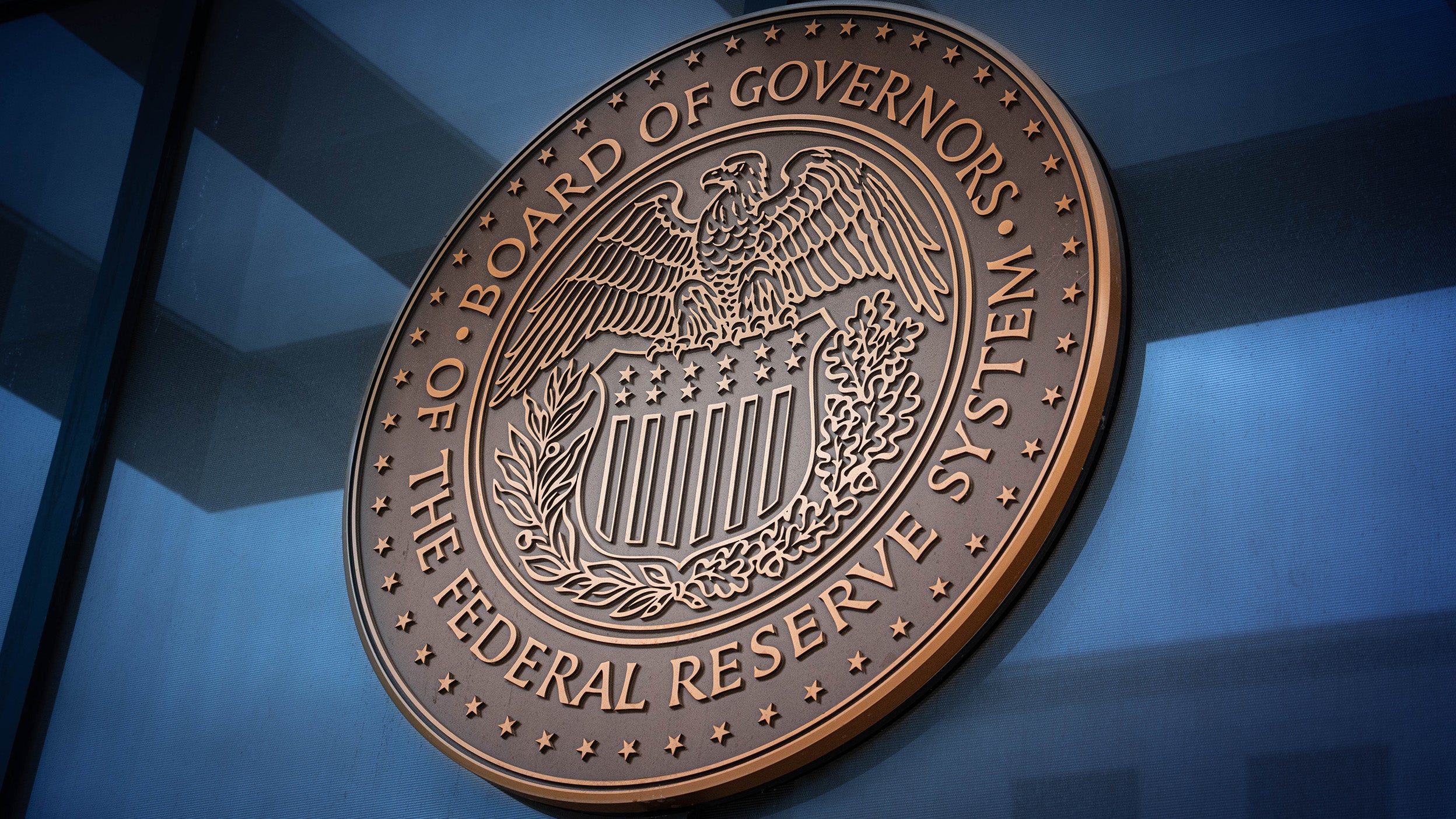
Markets and Economy Navigating Fed monetary policy uncertainty and the markets
A rate cut, which markets are pricing in despite Fed member differences, and an expected improving economy in 2026, could support stocks.

Last week’s trade agreement reduces the risk of near-term escalation, a welcome development for markets seeking clarity.
The Fed delivered an expected rate cut, but with a more hawkish tone than markets may have anticipated.
The market’s mixed reaction to tech earnings highlighted the ongoing debate around investment in artificial intelligence.
As market strategists, we’re constantly assessing the risks to our outlook. While we’ve written extensively about the drivers of our optimism — resilient global growth1, anchored inflation expectations2, and the prospect of policy easing — we also recognize that it’s not difficult to compile a list of potential headwinds. Last week, several of those risks came into sharper focus including the US-China trade conflict, concerns about the Federal Reserve’s independence, and questions around the payoff from artificial intelligence (AI) investment.
Let’s start with trade. We’ve long maintained that tariffs lead to less optimal economic outcomes. However, we’ve also argued that businesses and consumers can adapt, provided there is clarity. In that context, the announcement of a one-year truce between the US and China is constructive.
The truce provides temporary relief for global supply chains and signals a pause in escalating tensions. It doesn’t resolve the deeper structural issues between the two countries, but it does reduce the risk of near-term escalation, a welcome development for markets seeking clarity.
Turning to the Fed, last week’s meeting delivered a rate cut, but with a more hawkish tone than markets may have anticipated. Importantly, the Fed signalled that a December cut is not a foregone conclusion even as markets still expect another cut before year-end.3
From our perspective, the precise timing and pace of rate cuts is less important than the broader trajectory. We expect rates to move lower in the coming months. Most importantly, the Fed’s actions last week reaffirmed its independence. The central bank acted based on its assessment of the data, not political pressure. Highlighting the market’s confidence in the Fed’s independence, inflation expectations in the bond market remain remarkably stable.4
Finally, the market’s reaction to tech earnings highlighted the ongoing debate around AI investment. Alphabet was rewarded as Gemini user growth impressed investors. On the other hand, Meta sold off as markets questioned whether its increased spending will ultimately yield meaningful returns. We expect this debate to persist. The promise of AI is real, but the winners and losers will continue to be sorted out in the years ahead.
Considering these dynamics, our message has been consistent: We believe it’s time to diversify beyond mega-cap tech. We see opportunities in US cyclicals, smaller-cap and value stocks, and non-US markets. These areas offer more attractive valuations5 and may benefit from a global pickup in economic activity and continued policy support.
Date |
Region |
Event |
Importance |
|---|---|---|---|
Nov 3, 2025 |
US |
Employment Situation Report |
Key indicator of labor market health, influences Fed policy decisions. |
Nov 3, 2025 |
US |
ISM Non-Manufacturing Index |
Measures service sector activity, a major component of the economy. |
Nov 5, 2025 |
US |
Federal Reserve Interest Rate Decision |
Critical for monetary policy direction and market sentiment. |
Nov 5, 2025 |
US |
Fed Press Conference |
Provides insights into future policy moves and economic outlook. |
Nov 6, 2025 |
Eurozone |
European Central Bank Economic Bulletin |
Details economic conditions and monetary policy stance. |
Nov 7, 2025 |
US |
Consumer Credit Report |
Indicates consumer borrowing trends and financial health. |
Nov 7, 2025 |
Canada |
Employment Report |
Important for assessing labor market and Bank of Canada policy. |
Nov 7, 2025 |
Germany |
Industrial Production |
Key indicator of manufacturing sector strength in Europe. |
Nov 7, 2025 |
China |
Trade Balance |
Reflects global demand and economic momentum in China. |

A rate cut, which markets are pricing in despite Fed member differences, and an expected improving economy in 2026, could support stocks.

We believe global equities may continue to rise in the new year, and we expect new opportunities to be unlocked as market leadership evolves.

Get insight on the recent sell-off in the artificial intelligence trade, the potential for a Santa Claus rally, and the K-shaped economy.
Important information
NA4953407
Image: Sasin Tipchai / Getty
Some references are US-specific and may not apply to Canada.
All investing involves risk, including the risk of loss.
Past performance does not guarantee future results.
Investments cannot be made directly in an index.
This does not constitute a recommendation of any investment strategy or product for a particular investor. Investors should consult a financial professional before making any investment decisions.
The risks of investing in securities of foreign issuers, including emerging market issuers, can include fluctuations in foreign currencies, political and economic instability, and foreign taxation issues.
Investments in companies located or operating in Greater China are subject to the following risks: nationalization, expropriation, or confiscation of property, difficulty in obtaining and/or enforcing judgments, alteration or discontinuation of economic reforms, military conflicts, and China’s dependency on the economies of other Asian countries, many of which are developing countries.
Diversification does not guarantee a profit or eliminate the risk of loss.
Stocks of small- and mid-sized companies tend to be more vulnerable to adverse developments, may be more volatile, and may be illiquid or restricted as to resale.
In general, stock values fluctuate, sometimes widely, in response to activities specific to the company as well as general market, economic and political conditions.
A value style of investing is subject to the risk that the valuations never improve or that the returns will trail other styles of investing or the overall stock markets.
AI technology companies are sensitive to specific risks such as small markets, business cycle changes, economic growth, technological progress, obsolescence, and regulation. These companies may have limited products, markets, resources, or personnel, making their securities more volatile, especially for smaller start-ups. Rapid technological changes can adversely affect their results. AI companies often rely on patents, copyrights, trademarks, and trade secrets to protect their technology, but there is no guarantee these protections will be sufficient. Significant R&D spending does not ensure product or service success. show less
GDPNow is a nowcasting model created by the Federal Reserve Bank of Atlanta that forecasts real gross domestic product (GDP) growth by aggregating 13 components that make up GDP with the chain-weighting methodology used by the US Bureau of Economic Analysis.
A breakeven inflation rate is a market-derived estimate of future inflation, calculated by comparing the yield on a standard government bond (nominal) to the yield on an inflation-protected bond (TIPS) of the same maturity.
The Fed Funds rate is the rate at which banks lend balances to each other overnight. The implied rate is what the market expects this rate to be in the future.
The price-to-earnings (P/E) ratio measures a stock’s valuation by dividing its share price by its earnings per share.
Alpha refers to the excess returns of a fund relative to the return of a benchmark index.
Monetary easing refers to the lowering of interest rates and deposit ratios by central banks.
The Employment Situation Report is released by the US Bureau of Labor Statistics to monitor labor market data on a monthly basis.
Hawkish describes a central bank or policymaker's preference for a tighter monetary policy, typically to combat inflation.
Inflation is the rate at which the general price level for goods and services is increasing.
The S&P MidCap 400® Index is an unmanaged index considered representative of mid-sized US companies.
The S&P SmallCap 600® Index is a market-value-weighted index that consists of 600 small-cap US stocks chosen for market size, liquidity, and industry group representation.
The S&P 500® Value Index consists of stocks in the S&P 500® Index that exhibit strong value characteristics based on three measures: Book value-to-price, earnings-to-price, and sales-to-price.
The MSCI All Country World ex USA Index is an unmanaged index considered representative of large- and mid-cap stocks across developed and emerging markets, excluding the US.
The ISM Non-Manufacturing Index, which is based on Institute of Supply Management surveys of non-manufacturing supply executives nationwide, monitors business activity, new orders, employment, and supplier deliveries.
The opinions referenced above are those of the author as of Oct. 31, 2025. These comments should not be construed as recommendations, but as an illustration of broader themes. Forward-looking statements are not guarantees of future results. They involve risks, uncertainties and assumptions; there can be no assurance that actual results will not differ materially from expectations.
This link takes you to a site not affiliated with Invesco. The site is for informational purposes only. Invesco does not guarantee nor take any responsibility for any of the content.